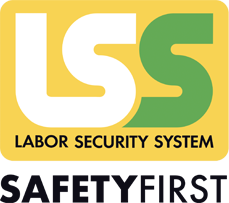Prevention in analytical laboratories
Where should the prevention of chemical and carcinogenic risk begin in analytical laboratories?
The Italian Interassociative Consultation for Prevention - CIIP - addressed safety in laboratories in the seminar “Management of chemical and carcinogenic risk in Healthcare.
First of all, it was recalled where prevention should start, namely the following prevention objectives:
- Minimize exposure to the risks highlighted for those involved in the production stages of storage, use of the substances used in laboratories throughout the entire life cycle.
- Keep under control the operations of acceptance, labeling, transfer of samples, preparation and pre-analytical, analytical operations, waste management, cleaning, transport, ...
- Provide and maintain information and training activities for employees.
- Minimize the impact on environmental matrices, in particular water. The reference laws and regulations to be applied at the same time are: Dlgs. 81/2008, REACH (CE 1907/2006), CLP (CE 1272/2008) and SDS (UE 830/2015) and subsequent amendments.
- Apply specific standards in a site-specific way (UNI EN ISO 15189: medical laboratories, UNI EN 14175 for hoods, UNI EN 14470 Fire safety storage cabinets
- Follow the general and specific guidelines for safety and the environment ... ".
Moving on to the priority criteria - with reference to the contents of the Stanford Laboratory Risk Assessment Tool - the seminar focused on various aspects, such as the identification elements of substances.
Remember that a substance or mixture classified as dangerous and contained in a package "is provided with a label containing the following elements:
- Name, address and telephone number of the supplier or suppliers.
- The nominal quantity of the substance or mixture contained in the package made available by the public, if this quantity is not indicated elsewhere in the package.
- Product identifiers.
- The hazard pictograms.
- Warnings.
- The danger indications.
- Appropriate safety advice.
- A section for additional information accordingly.
The toxicological fields were then mentioned "that most relate to the 'risk assessment' of chemical substances in relation to the Consolidated Law and the European regulations REACH, CLP, SDS:
- Acute and chronic toxicity for oral, inhalation and dermal intake
- Skin and eye irritation
- Skin and respiratory sensitization
- Carcinogenicity, mutagenicity, reproductive toxicity
- Ecotoxicity
- LD50 (Lethal Dose 50%), NOAEL (No Observed Adverse Effect Level), LOAEL (Lowest Observed Adverse Effect Level), DNEL (Derived No-Effect Level), PNEC (Predicted No-Effect Concentration) ".
The speech also focused on many other aspects. We point out some that you will surely have the pleasure of learning more about:
- Essential performance of the hood according to UNI EN 14175.
- Path for the choice of respiratory protection devices with respect to pollutants dispersed in the air.
- Transition from the PPE Directive 89/686 / EEC to Regulation (EU) 2016/425 of the European Parliament and of the Council of 9 March 2016 on personal protective equipment.
- Efficiency criteria of some filter media for aerosols.
- Production of nano fibers for filter media.
- UNI EN ISO 15189: medical laboratories.
- Revision of the UNI EN 689 standard.
- UNI EN 14470 Fire safety storage cabinets

